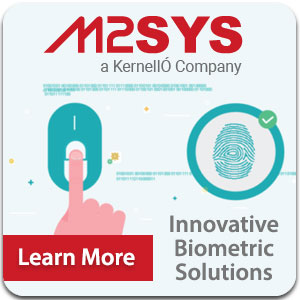Using biometric fingerprint technology raises several ethical concerns about the balance between security and privacy.
On the one hand, biometric fingerprint technology can provide a high level of security by allowing individuals to be uniquely identified through their biometric characteristics. It can be helpful in various settings, such as government facility access control and border security.
However, the collection and use of biometric data also raise privacy concerns. Biometric data is unique to an individual and cannot be changed, so once it has been compromised, it is difficult to protect against future misuse. There is also the risk of using biometric data for unethical purposes, such as profiling or discrimination.
To address these concerns, it is essential for organizations that use biometric fingerprint solution to have clear and transparent policies in place regarding the collection, use, and protection of biometric data. They should also provide individuals with the option to opt out of the use of biometric technology and respect individuals’ privacy by only collecting and using the minimum amount of biometric data necessary for the specific purpose.
The Benefits of Biometric Fingerprint Technology
There are several benefits to the use of biometric fingerprint solution:
- Improved security: Biometric fingerprint technology allows for the unique identification of individuals, improving security in various settings. For example, it can secure access to buildings, devices, and sensitive information.
- Convenience: Biometric authentication can be more convenient than other forms of identification, such as passwords or PINs, which can be forgotten or lost.
- Increased accuracy: since biometric fingerprint technology collects unique fingerprint data, it can provide a high level of accuracy in identifying individuals
- Cost savings: Organizations can save money by avoiding the need for extra security precautions like security guards, thanks to biometric fingerprint technology.
- Enhanced user experience: By facilitating quicker and easier access to resources or services for users, biometric fingerprint solution can enhance user experience.
- Fraud prevention: Biometric fingerprint system can help prevent fraud by ensuring only authorized individuals can access certain services or resources.
The Risk of a Biometric Data Breach
There is a risk of biometric data being compromised in a data breach. Suppose unauthorized parties access biometric data. In that case, it can be difficult or impossible to change, making it more valuable to attackers than other personal information such as passwords or credit card numbers.
There have been several instances of biometric data breaches in which unauthorized parties have accessed large amounts of biometric data. For example, in 2017, the US Office of Personnel Management announced that it had suffered a data breach in which the biometric data of millions of individuals was compromised.
In other similar cases, biometric data was breached due to a lack of security measures. These leaks of information cost people to lose government benefits or their wealth. Hence protecting these data is very important.
To protect against biometric data breaches, organizations should implement strong security measures, such as encrypted databases and secure servers, and regularly update their security protocols to avoid emerging threats. They should also provide individuals with the option to opt out of the use of biometric technology and respect individuals’ privacy by only collecting and using the minimum amount of biometric data necessary for the specific purpose.
How to Protect Your Biometric Data
The parties who are collecting biometric data should responsibility act to secure it. There are many ways an organization can do it. These include –
- Implement robust security measures: This includes using encrypted databases to store biometric data, using secure servers and networks to transmit data, and implementing robust authentication processes to ensure only authorized personnel can access the data.
- Obtain consent: Organizations should ensure they have the explicit consent of individuals before collecting and storing their biometric data.
- Limit access: Only authorized personnel should have access to biometric data and should limit their access to what is necessary for their job duties.
- Regularly update security measures: It’s essential to keep security measures up to date to ensure that biometric data remains protected. It includes regularly updating software and security protocols.
- Train employees: Employees should be trained to handle and protect biometric data.
- Use multiple layers of security: Using multiple layers of security, such as using both a password and a biometric feature to access data, can help to protect biometric data better.
- Conduct regular audits: Regular audits can help organizations identify and address any vulnerabilities in their biometric data security measures.
Fingerprint Biometric Solutions from the ISG
The ISG offers effective ways for you to enhance your security while protecting privacy. With our range of hardware and software solutions, your local ISG member dealer can provide a complete solution covering all biometric security aspects. From fingerprint scanners to iris cameras to biometric access cards, we can provide it all.
ISG solutions include safeguards to ensure that all biometric data is collected and stored securely with access authorized to the personnel you designate. Our solutions provide the enhanced security you need balanced with the privacy protections you require.


